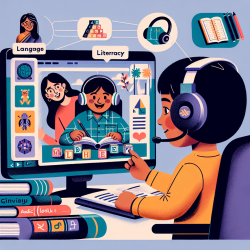Speech-language pathologists (SLPs) and special educators face unique challenges when working with highly unintelligible children. These children, often unable to produce speech sounds clearly enough to be understood, require specialized intervention strategies that target their specific needs. Drawing upon the research presented in "Phonological Remediation Targets - Words and Primary Pictures for Highly Unintelligible Children" by Carol Liddiard Buteau and Barbara Williams Hodson, this blog post aims to provide practitioners with insights and strategies to enhance their therapeutic outcomes.
The core of phonological remediation lies in the careful selection of target words and the use of primary pictures. These tools are not merely aids for therapy but are the foundation upon which successful phonological development can be built. The research emphasizes the importance of selecting words that are familiar to preschool children, easily represented in picture form, and devoid of phonemes likely to inhibit target pattern production.
Understanding Phonological Processes
Before diving into the specifics of phonological remediation, it's crucial to understand the phonological processes that typically develop in children. These processes are patterns of sound errors that young children use to simplify speech as they are learning to talk. Identifying and addressing atypical phonological processes early on can significantly impact a child's intelligibility.
Implementing Phonological Remediation
The booklet reviewed in the research article provides a comprehensive guide to selecting optimal phonological targets. Here are some strategies derived from the research findings:
- Use of Primary Pictures: Visual aids can significantly enhance learning and retention. The research highlights the use of line drawings organized into primary target patterns. These pictures, sized for easy handling and viewing, can be used as examples or for direct practice in therapy sessions.
- Selection of Target Words: The choice of words is critical. Words should be familiar, easily picturable, and supportive of the phonological patterns being targeted. This ensures that children are not only learning to pronounce sounds correctly but are also able to connect these sounds to their everyday experiences.
- Targeting Specific Phonological Patterns: Focusing on specific phonological patterns, such as syllables, final consonants, velars, and liquid sounds, can provide a structured approach to therapy. Each pattern addresses a particular area of need, making therapy more efficient and effective.
- Repetition and Practice: Consistent practice with the selected words and pictures is essential. Repetition solidifies learning and helps children transfer these skills into their spontaneous speech.
Adapting Strategies for Individual Needs
While the research provides a robust framework for phonological remediation, it's essential to adapt these strategies to meet the individual needs of each child. Factors such as age, developmental level, and specific speech sound errors should guide the customization of therapy plans.
Collaboration with Parents and Educators
Successful phonological remediation extends beyond the therapy session. Engaging parents, teachers, and other caregivers in the process can provide children with additional opportunities for practice and reinforcement. Sharing resources, such as copies of the primary pictures and word lists, can facilitate this collaboration.
Continued Research and Professional Development
The field of speech-language pathology is continually evolving, with new research shedding light on more effective strategies for intervention. Practitioners are encouraged to engage in ongoing professional development and research to refine their skills and stay abreast of the latest methodologies.
In conclusion, the research article "Phonological Remediation Targets - Words and Primary Pictures for Highly Unintelligible Children" offers valuable insights into the selection of phonological targets for therapy. By implementing these strategies, practitioners can enhance their therapeutic outcomes and support the development of clearer, more intelligible speech in children.
To read the original research paper, please follow this link: Phonological Remediation Targets - Words and Primary Pictures for Highly Unintelligible Children.










